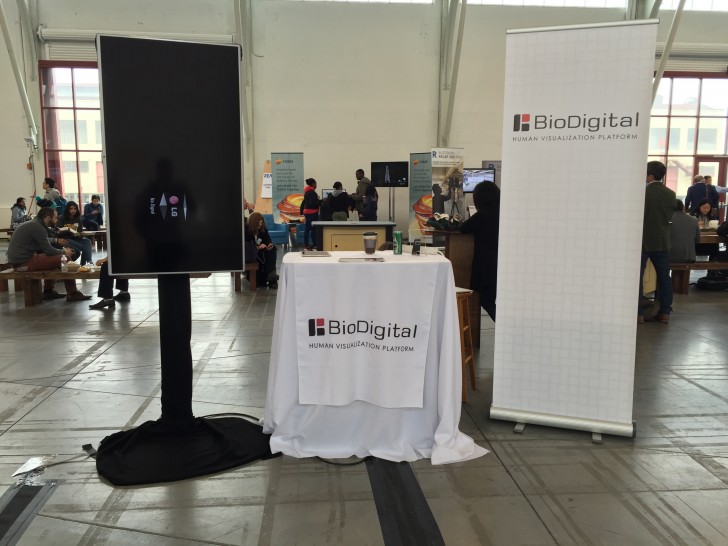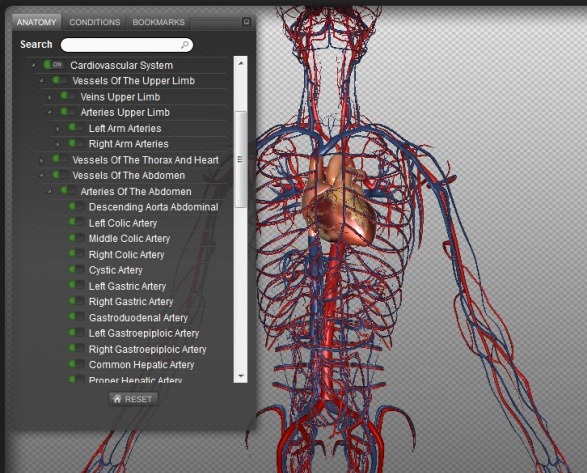Continuing our on-going coverage of REAL 2016, today we’ll introduce you to BioDigital, a biomedical visualization company set on improving our physical health through digital means. Although 3D printing technology is being increasingly used in the medical industry to help with surgical preparation and other applications, the body is fluid by nature and many health issues can not be fully understood with just a solid physical model. That’s where BioDigital comes in.

The New York City-based startup is focused on enhancing the way we understand healthcare and look at our bodies, using 3D technology to help explore places within us that we’ve never really been able to see before. I sat down with co-founder Frank Sculli at REAL 2016 to discuss the details of how BioDigital is set out to change the reality in which we view healthcare.
“Around 2002, we saw the emergence of 3D technology and the profound impact it having in industries like video games and in Hollywood, and we looked at how antiquated the way people communicated medical information,” Sculli told me. “We knew that 3D technology was the best suited for the representation of the human body.”
Sculli and his partner went on to work in various facets of the healthcare industry, bu,t after a decade since 3D technology first caught their eye, they realized that this emerging technology was still lacking representation within the healthcare industry.
“We took a hard look at why that was and it was much more sophisticated to model than anything else. People were risk-adverse and it was still very expensive,” Sculli added. “You really had to bring down cost, make it easier to adopt, shorten development time, and we thought we could do that by creating an underlying virtual body platform that could power all of those experiences across healthcare.”
And so, in 2013, BioDigital began creating a human body cloud platform to allow anyone to learn about their health and anatomy through a visual 3D environment. In order to accurately digitize the human body, BioDigital utilizes scan data and Autodesk software, which has helped them document over 7,000 anatomy objects and health condition models in a 3D environment. “A lot of times we use scan data, and reconstruct it through a proprietary pipeline, and then we leverage Autodesk tools like Maya to do some of the manual work around that,” Sculli explained to me. “Then there’s a pretty hardcore optimization process that has to take place to get those models to run in real-time from the lowest end phone to all desktops and browsers.”
Once access is granted into BioDigital’s virtual body environment, both students in training and clinicians can dynamically simulate physiology and surgical procedures. Users can zoom in and out of the human anatomy, and view a chosen part of the model from any angle. The obvious advantage of the digitized 3D model is that the body and its diseases can be learned and dealt with in a dynamic and fluid nature. Sculli discussed how 3D printing technology can complement their virtual environment, but went on to explain how human anatomy might be best taught through a digital platform.
“It’s funny how things went from physical to digital, and now you’re seeing them go back to physical. I think that our technology augments the physical and the 3D printing world perfectly because we always talk about how you’d walk into your doctors office and they’d have a physical model on their desk. Well, we’re sort of the future of that where now they can pull up their iPad and show you what’s happening inside your body in three dimensions,” Sculli said.
“But on the 3D printing side, you still need to be in one physical place in time to leverage that model, but that same data can then be uploaded to a cloud and accessible to anyone at anytime, and put in a collaborative format. So, you can have multiple clinicians advising on a case or annotating a model, or sharing with the patient or their family at home. You get that whole continuum of education from the physical world to the virtual world.”
Sculli makes a great point. As accurately and quickly as parts of the human anatomy can be replicated and 3D printed, there are still limitations stemming from the physical world. By creating a digitally interactive map of the human body and the diseases that plague us, BioDigital has put forth a platform that can be utilized by almost everyone. For medical device and pharmaceutical producers, the BioDigital platform can be used to visually represent the functioning of their product within the human body. On the other hand, clinicians and medical educators can use the 3D platform to rapidly teach certain devices or conditions, allowing for quick and efficient on-the-spot training. Lastly there are the patients and their families, who can now gain a critically important understanding of what is going inside of the body, and visually gauge what medicinal or procedural path needs to be taken to optimize their physical health.
Sculli and his team foresee a future where the digital mapping of the human anatomy will help us understand the physical reality of our healthcare in a much clearer and more informed way. “I think traditionally consumers just trusted to the word of their clinician and they weren’t so interested in having a deep understanding of their health, but that’s changed fast. They want information, but the information online right now is not consumable,” Sculli concluded.







